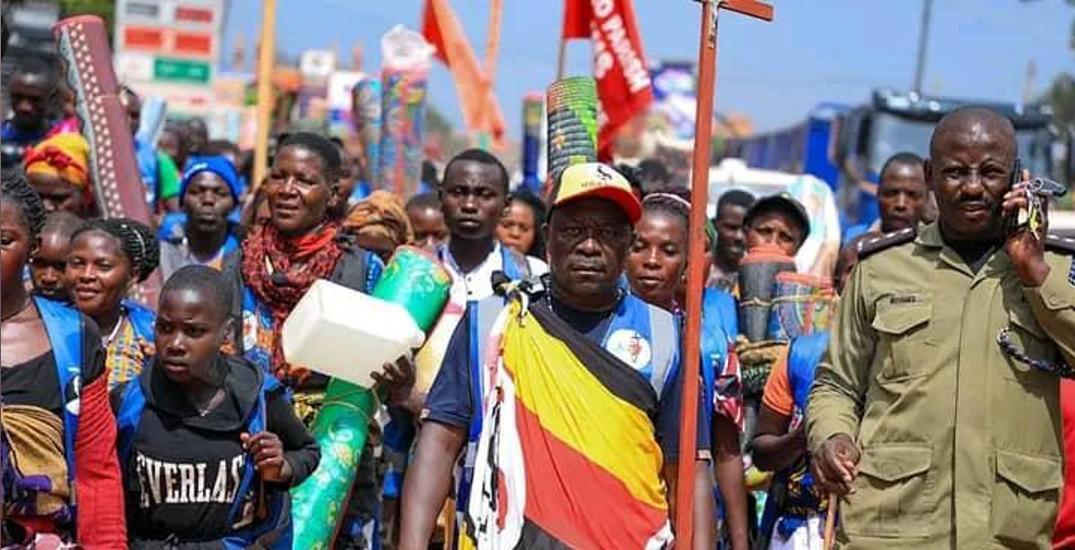Africa-Press – Uganda. Every 3rd of June, Uganda’s Namugongo becomes the epicenter of African Christianity. From as far as 500 kilometers away, pilgrims make their way there on foot enduring rain, dust, fatigue, and hunger, all for a single purpose: to honor the Uganda Martyrs. Some trek from Kenya, Rwanda, Tanzania, and even the Democratic Republic of Congo. For many, this is not just a spiritual journey; it is an act of unwavering faith, sacrifice, and identity.
The question, then, is not just about the distance, but about the depth. Why would anyone walk that far? What is it about the Uganda Martyrs that inspires such devotion? And why does faith still run so deep among Africans today?
The story of the Uganda Martyrs begins in the late 19th century, when young men both Catholic and Anglican were executed by the then Kabaka of Buganda Mwanga for refusing to renounce their Christian faith.
Burned alive, beheaded, and tortured, their deaths planted a seed of faith that has grown into a powerful symbol of courage, resilience, and religious conviction across Africa.
For many believers, walking to Namugongo is not just a tradition it is a reenactment of that sacrifice. It is a chance to endure, however briefly, pain and struggle in honor of those who endured even more. Some ask themselves, If they could give their lives for Christ, what is 300 kilometers on foot?
The cross-border pilgrimages tell a wider story: of a continent where faith is still deeply woven into the fabric of society. In an age of growing secularism in many parts of the world, Africa’s spiritual heartbeat remains strong.
Namugongo, then, becomes more than a Ugandan event. It is an African one. The presence of Kenyans, Rwandans, and Congolese among the pilgrims speaks to a shared cultural memory of suffering, hope, and belief. The martyrs represent not just Ugandan heroes, but African models of moral strength and divine purpose.
This year, the People’s Front for Freedom (PFF) called on pilgrims to pray for Uganda ahead of the election season. PFF spokesperson Ibrahim Ssemujju Nganda pointed to growing political uncertainty, saying Uganda needs more prayers because “a lot is not going well especially in the political space.”
Such appeals to spiritual intervention are telling. In Uganda and many parts of Africa, political instability, economic hardship, and social inequalities are often confronted not only through activism or reform, but through prayer and communal faith.
The pilgrimage to Namugongo becomes both a religious and socio-political act: believers walk to seek personal redemption, yes, but also to intercede for their nations.
What makes Namugongo unique is its blending of past and present, of history and hope. It reminds believers that they are part of a longer story—one in which faith can overcome fear, and sacrifice can produce strength.
In that sense, the act of walking hundreds of kilometers is not just a show of faith it is faith in motion.
As thousands gather once again this June, the roads to Namugongo are filled not only with people, but with purpose. And in a continent where religion still shapes identity and community, the Uganda Martyrs remain a powerful reminder of how deeply faith can move people—literally and spiritually.
For More News And Analysis About Uganda Follow Africa-Press






